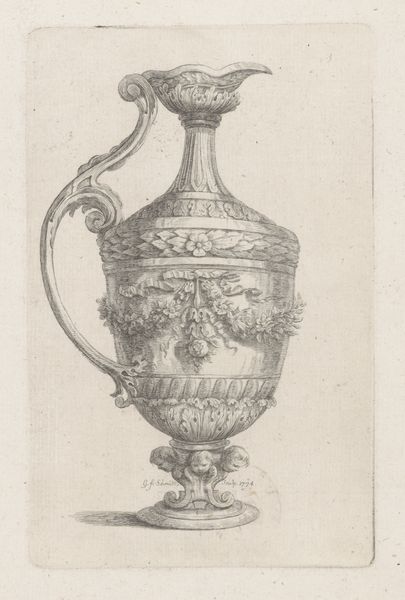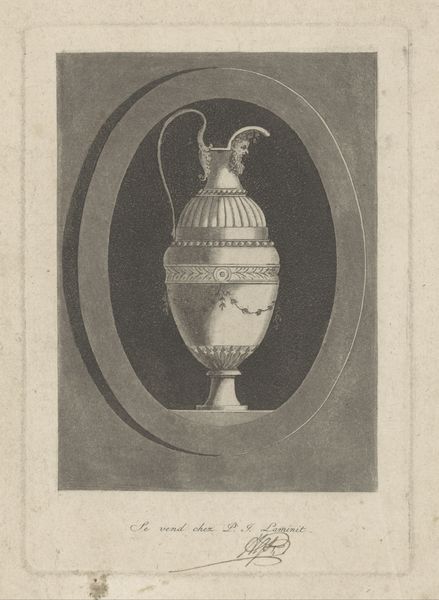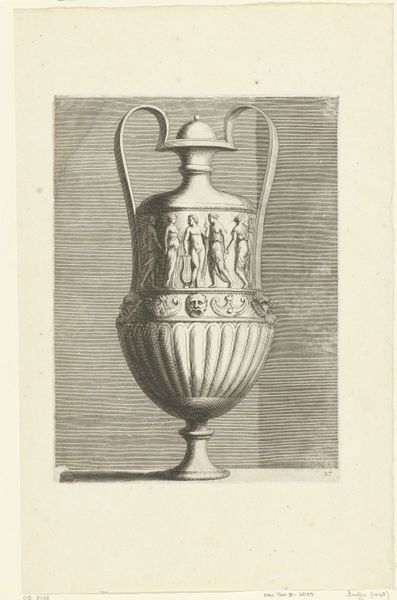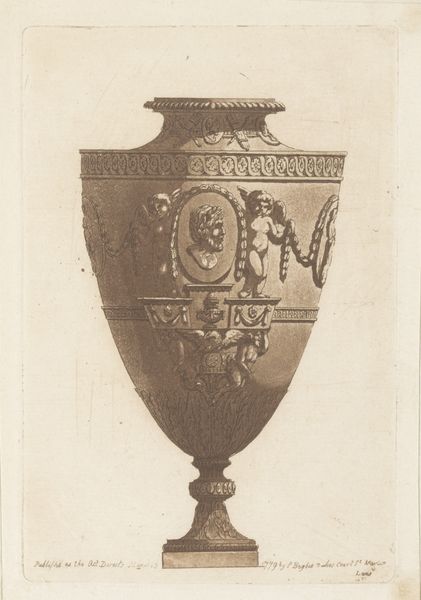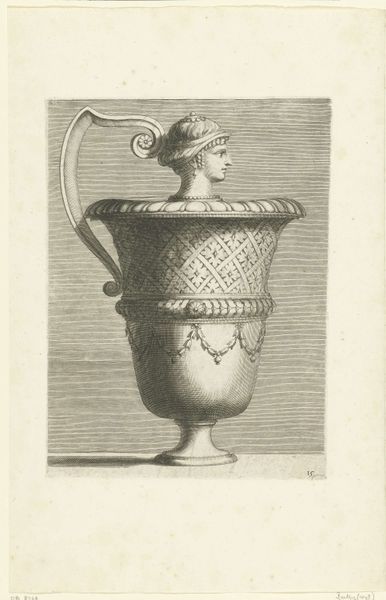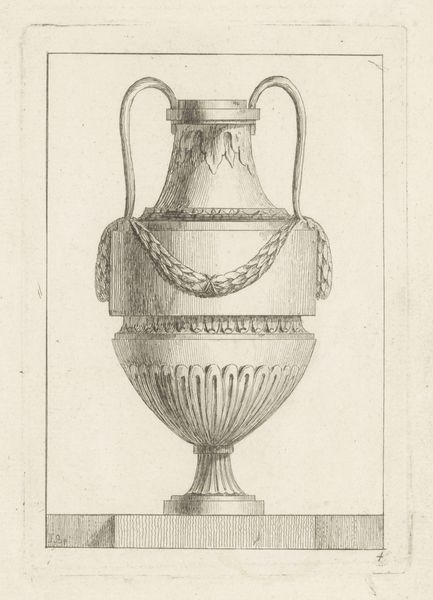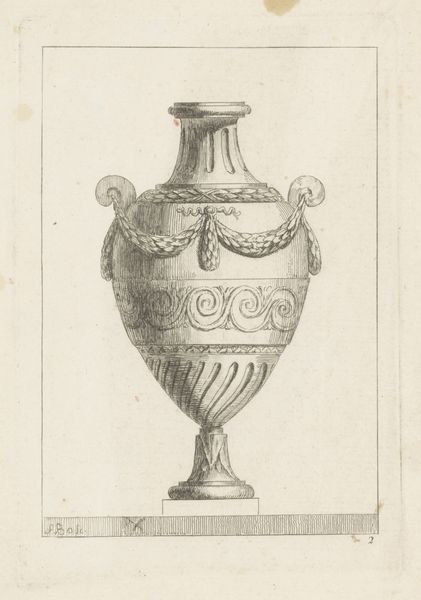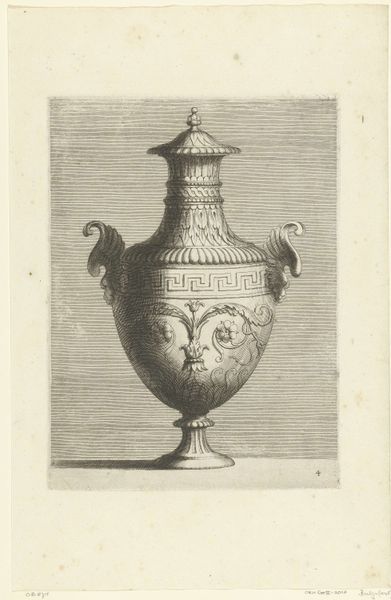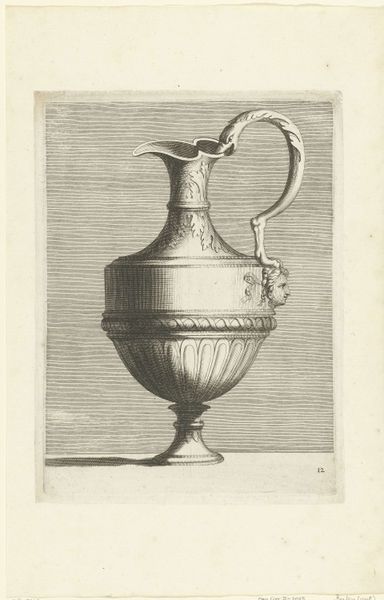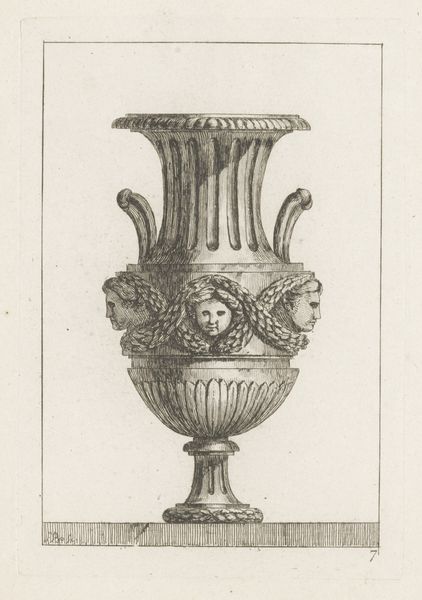
print, paper, engraving
#
neoclacissism
# print
#
old engraving style
#
paper
#
engraving
Dimensions: height 180 mm, width 111 mm
Copyright: Rijks Museum: Open Domain
This is a design for a Waterkan, made by de Saint-Morien. Look at the amount of work involved in the production process. The body of the vessel seems to be lathe-turned, with the spiraling flutes of the upper portion cut away by hand. There are molded decorative elements, perhaps applied using lost-wax casting. The handle would have been formed by forging and filing. Each of these steps requires different specialist skills. This is a utilitarian object, yet conceived with the refinement of the goldsmith’s art. How might a piece like this have been produced? Perhaps by dividing labor, with one artisan specializing in lathe work, another in casting, and another in hand-applied decoration. This speaks to the division of labor in eighteenth century manufacture, where each maker was only responsible for a portion of the finished product. Paying attention to these material and production processes helps us to challenge traditional distinctions between fine art and craft.
Comments
No comments
Be the first to comment and join the conversation on the ultimate creative platform.
